Wildlife isn’t as wild as it used to be. As more and more wildlife lose their natural habitats to humans, the less “wild” these pests become. They are only doing what comes naturally and that’s to adapt to their environment so they can eat, nest, and reproduce. Your home probably provides a lot of these necessities without you even knowing about it so sooner or later, you will probably have a wildlife problem.
These pests are more than just a nuisance in most cases. They can carry diseases, viruses and bacteria that is harmful to you and your family. They cause physical damage to wood, sheetrock, insulation, roofing, wiring and other structural parts of your home and the odors from urine and droppings can be hard to bear. Knowing a little bit about these pests is a good place to start if you find you have a wildlife control problem.
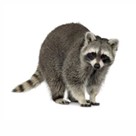
Racoons: These somewhat harmless looking pests are often seen as little burglars, in large part to their black-banded eyes that make them look like they are wearing a mask, but also due to their nature to pilfer and take whatever they can find in the dead of night. They will dig in your garbage, dig in your yard and will likely find a nesting area in your attic or under your house if they think they can continue to find food. They have no problem tearing up your roof or foundation to create easier entry and exit points.
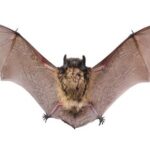 Bats: Bats are scary enough just seeing them fly around outside, much less finding them in your home or attic. These creatures also carry a wide range of diseases and can be a health risk for humans. They prefer cool, dark areas for their colonies and your attic is the perfect choice once they find out how to get in. The odors from their urine and droppings can be unbearable and can damage exposed insulation.
Bats: Bats are scary enough just seeing them fly around outside, much less finding them in your home or attic. These creatures also carry a wide range of diseases and can be a health risk for humans. They prefer cool, dark areas for their colonies and your attic is the perfect choice once they find out how to get in. The odors from their urine and droppings can be unbearable and can damage exposed insulation.
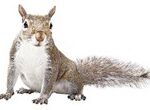 Squirrels: Not so scary, especially when you see them scampering around outside, these pests can become real terrors when they build their nests in your home. They love to chew on just about anything to keep their growing teeth trimmed down. That means roofing, wood, and even electrical wires, creating the risk of electrical fires that could completely destroy your home.
Squirrels: Not so scary, especially when you see them scampering around outside, these pests can become real terrors when they build their nests in your home. They love to chew on just about anything to keep their growing teeth trimmed down. That means roofing, wood, and even electrical wires, creating the risk of electrical fires that could completely destroy your home.
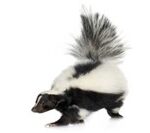 Skunks: We all know the danger of getting too close to a skunk with their infamous spray that has a strong, pungent odor that’s really hard to get rid of. But that’s just part of the problem. Skunks will also dig into your garbage, tear up your yard and cause other mayhem. Although their spray is a formidable defense in itself, there is the chance of being bitten and they are known to carry diseases and can have rabies.
Skunks: We all know the danger of getting too close to a skunk with their infamous spray that has a strong, pungent odor that’s really hard to get rid of. But that’s just part of the problem. Skunks will also dig into your garbage, tear up your yard and cause other mayhem. Although their spray is a formidable defense in itself, there is the chance of being bitten and they are known to carry diseases and can have rabies.
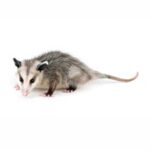 Opossums: The opossum is about the size of a large house cat, opossums are considered beneficial mammals because they eat a variety of insects and snakes, causing many property owners to consider them beneficial. Opossums are nomadic, seldom staying long in any one place, and utilizing abandoned burrows or crawl spaces. They may sometimes become a nuisance to homeowners when foraging for food and shelter. Opossums may enter attics, walls, and crawl spaces of homes if they have access. The presence of an unusual and foul odor in your home may point to there being a opossum living in your walls.
Opossums: The opossum is about the size of a large house cat, opossums are considered beneficial mammals because they eat a variety of insects and snakes, causing many property owners to consider them beneficial. Opossums are nomadic, seldom staying long in any one place, and utilizing abandoned burrows or crawl spaces. They may sometimes become a nuisance to homeowners when foraging for food and shelter. Opossums may enter attics, walls, and crawl spaces of homes if they have access. The presence of an unusual and foul odor in your home may point to there being a opossum living in your walls.
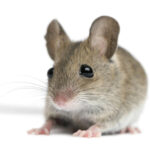 Rodents: Rats and mice are probably the most common of all wildlife pests and they present many of the risks found with other wildlife. They carry diseases, cause physical destruction to your home and are known to chew electrical wiring which could lead to a house fire. They will bite and they have the added advantage of being able to get into your home through the tiniest of openings. Once inside, they build their nest and begin breeding, adding steadily to the risk for you and your family.
Rodents: Rats and mice are probably the most common of all wildlife pests and they present many of the risks found with other wildlife. They carry diseases, cause physical destruction to your home and are known to chew electrical wiring which could lead to a house fire. They will bite and they have the added advantage of being able to get into your home through the tiniest of openings. Once inside, they build their nest and begin breeding, adding steadily to the risk for you and your family.
If you experience an influx of wildlife in or around your home, call the experts at Universal Pest Services (610)449-0740 and schedule a free inspection today!